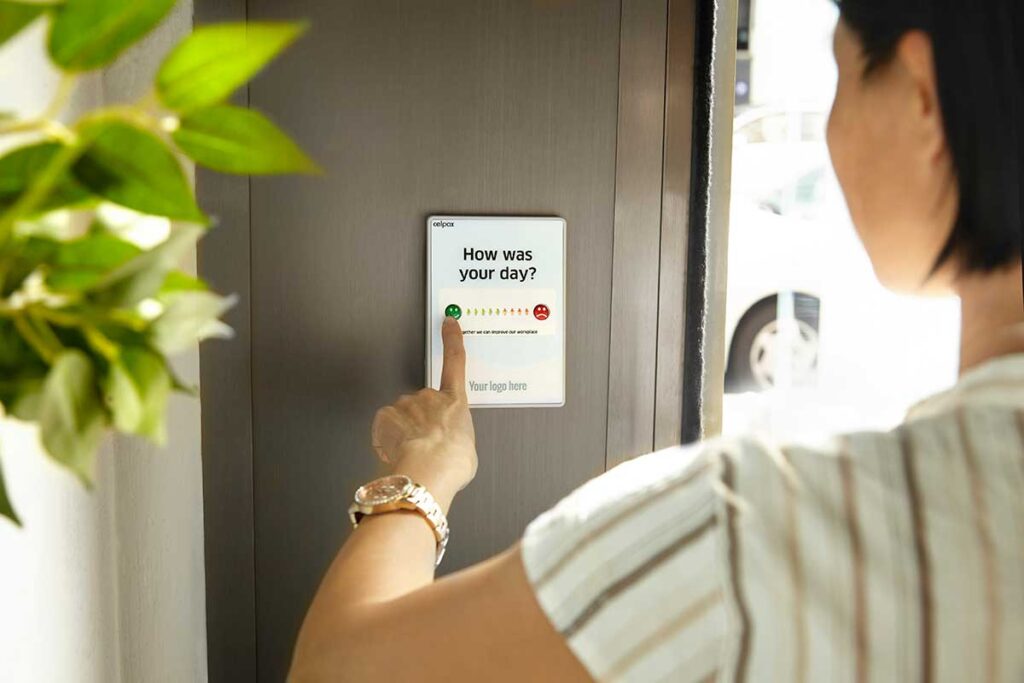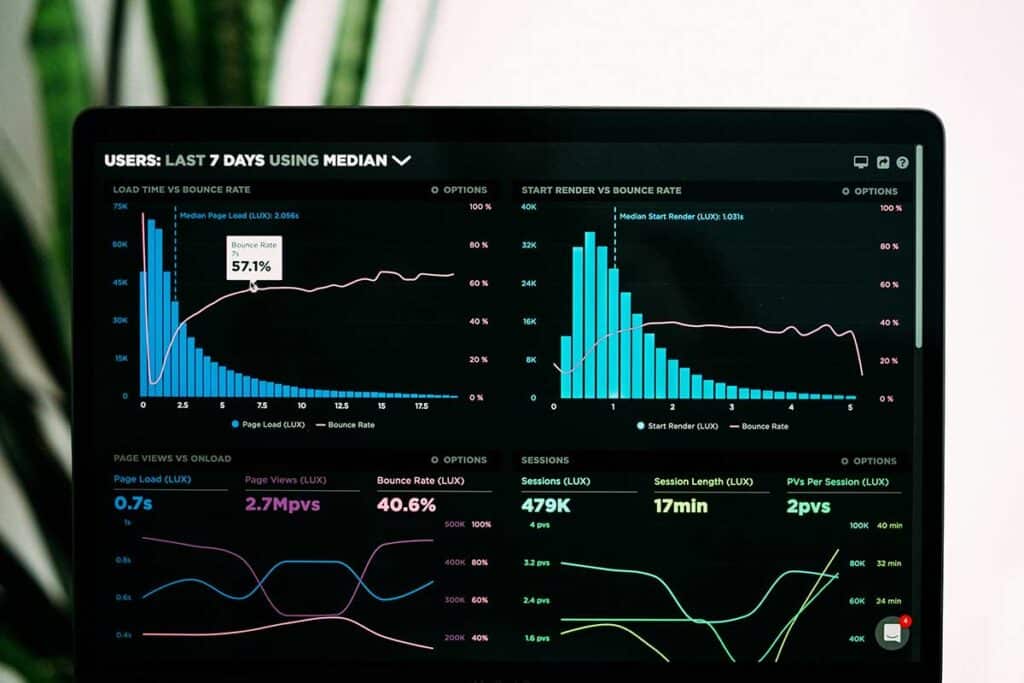Feedback loops are a huge part of successful CX. While all businesses know and understand the value of feedback, why are feedback loops in particular so important? And how do you go about setting them up and systematically using their input?
We’ll answer those questions in this article. We’ll also explore the differences between feedback and feedback loops and between positive and negative feedback loops. Finally, we’ll share our approach to feedback loops and give you some tips for success.
Feedback vs. feedback loops
The ‘loop’ in feedback loops implies a cycle – a key distinction between feedback loops and simple ‘feedback.’ The other key distinction is closure, which in this case means either acknowledgment or action. Feedback can happen once, and it doesn’t necessarily include any type of closure. Feedback loops, on the other hand, indicate both action and a continuing process.

We’re familiar with feedback and feedback loops in our daily lives, only we don’t think of them that way.
If someone compliments you on your sweater, that’s feedback. It’s information received that the person likes your sweater; you may or may not take that feedback into consideration the next time you wear the sweater.
If you wake up and it’s chilly, you might put on a sweater. After it warms up, you get too hot and take the sweater off. That’s a feedback loop: you’re receiving information from your body about its temperature and using that information to decide what to wear and for how long.
Another example of a feedback loop: You ask a friend’s advice about how the sweater looks with your pants. If they say it looks terrible, you’ll take that information and choose a different sweater. You’ll avoid wearing that combination in the future, and you may also avoid similar combinations (at least, you may if you trust your friend’s fashion sense).
So, we’re always taking in data and using it to make decisions. In business, feedback loops are simply the term we use to describe one way of incorporating others’ feedback into our planning and operations.
What is a feedback loop?
If you’re coming here from our earlier article on How to Improve the Retail Customer Experience in Stores, you’ve already been introduced to the feedback loop. In the broadest sense, it works like this:
- Feedback is gathered.
- Feedback is analyzed.
- Insights are collected from the feedback and used to shape relevant decisions.
In retail – and in most customer-facing feedback cycles – the loop includes a little something extra:
- Feedback is gathered – i.e. the customer is prompted to complete a survey or share their opinion.
- The customer is thanked; the team may follow up on the feedback to address an issue or get more details.
- Feedback is collected and analyzed.
- Insights from the feedback are used to shape relevant decisions.
To reiterate, it’s the closing of the feedback loop and its repeatability that set it apart from simple feedback. So, what exactly does it mean to close a feedback loop?
From the customer’s perspective, a feedback loop is closed because it includes an acknowledgment and, sometimes, additional action.
For example, simple feedback might be “ Product X doesn’t do what I need it to do”. A feedback loop would add a follow-up by the customer care team, i.e. finding out why Product X doesn’t meet their expectations. The team would then listen to the customer’s reply and (hopefully) solve the problem. Internally, the team monitors these types of complaints and makes a recommendation: Product X needs better onboarding; new customers are struggling to figure out how to use it.
It’s good to note that feedback loops may not come directly from customer surveys and suggestion cards. Often, companies use related data – such as customer service data and complaint logs – to create feedback loops.
The value of feedback loops
The value of feedback loops is twofold: it benefits business strategy as well as relationships.
Let’s take strategy first. Companies are often inundated with suggestions for improvement. These can come from a variety of sources – from personal preference to competitive analysis to employee and customer input. Deciding which suggestions to implement can take a lot of time and effort. However, feedback loops are an effective and repeatable way to understand and prioritize what customers want. Assuming you’d like to be a customer-centric business, feedback loops help you prioritize what needs to be done now, what should be done next, and what can be left until later. (Check out our Now-Next-Later framework for more details.)
A well-designed feedback loop can increase engagement for employees and customers alike. When they can see their ideas and complaints are considered and acted upon, they feel heard and valued. With personalization and retention essential on both sides of this equation, feedback loops reinforce a human-centric outlook within the organization.
Automation in feedback loops
Because time is of the essence in feedback loops, automation is often used to streamline the process. We’re fans of this, but it should be implemented thoughtfully to ensure that the correct data is being captured at the best time. Some ways that companies use automation in feedback loops are:
- Through customer service chatbots and post-transaction surveys.
- At self-service touchpoints (e.g. websites, in-store kiosks).
- Through event-triggered emails (i.e. after a registered customer makes a purchase).
- As part of checkout processes.
Automation can speed up the data-gathering process, reduce errors, and quickly deliver data to analytics platforms or CRM tools.
Positive vs. negative feedback loops
You may hear the terms ‘positive feedback loop’ and ‘negative feedback loop’ mentioned occasionally. Let’s quickly clear up what these mean in a business context.
A negative feedback loop is not a feedback loop that uses negative reviews to determine what improvements to make. A negative feedback loop is a loop based on customer input.
Likewise, a positive feedback loop is not based exclusively on positive feedback. It’s powered by employee feedback.
Another way to remember it is that a negative feedback loop improves your product or service, while a positive feedback loop improves employees’ working environment and processes.
Understanding feedback loop context
Now that we’ve discussed the basics of feedback loops, let’s talk about three things that often get overlooked in the rush to implement them:
- Who to collect feedback from.
- When to collect feedback.
- What metrics to use.
Feedback Source

First, it’s vital to ensure you’re only collecting feedback from the right people. If you’re collecting feedback from employees regarding the processing of returned items, you need feedback from the employees who handle and supervise this process. It can be tempting to collect feedback from others that aren’t directly involved, but that can take too much time. Even worse, it can provide “insights” that are neither accurate nor trustworthy.
Data Types

It’s also important to understand the type of data you want to collect. Qualitative data is helpful for capturing subjective information – the customer’s feelings, opinions, etc. You can get this by using surveys, comment cards, etc. Quantitative data is often expressed numerically – think statistics, measurable trends, etc. Some companies are biased towards one or the other, but both types of data are valuable. Having said that, it’s difficult to capture trends if you’re relying on qualitative data and vice versa; being clear on your objectives will help you determine which types of data you need.
Timing

Next, let’s talk about the time element. Of course, you’ll want to collect feedback from customers as near to the event as possible. But the other element in play is timeliness – making sure that the feedback cycle doesn’t take so long that its insights are no longer relevant. Thus, feedback loops are designed to operate quickly. We don’t gather extraneous data in the hope that it will give us “a better view”. A feedback loop depends on getting information from the right people (those actively involved) at the right time, analyzing it, and acting on it. The sooner you can analyze the data, the better placed you’ll be to surface problems and fix them.
Metrics

We also need to talk about which metrics to choose for your analysis. Vanity metrics (such as social media likes) can be alluring, but these don’t tell the entire story. To choose the right metrics, you need to be clear on your goals and the relevant processes or workflows. You must know how your KPIs relate to both.
Finally, take into account the customer/user/employee context. Understanding what they are trying to accomplish, what their feelings might be in this situation, and what is causing them friction will help you create meaningful improvements. One way to do this is by using customer journey maps.
Want to stay current with the latest CX news?
Subscribe to the CX by Design Thinking newsletter! You’ll get our best insights, favorite tips, and most interesting news delivered to your inbox every month.
Feedback loops the CX by Design way
So, how does CX by Design create feedback loops? I’m glad you asked! Our process is influenced by our principles of being human-centric in all things; in other words, we never lose our focus on the people involved in every step of the process. Here’s an overview of how we approach designing and implementing feedback loops.
- Getting to know the client
Our first step is to deeply understand our client’s organization, processes, and customers. We do this by combing through documents, reviewing supporting technologies, and facilitating multiple meetings and workshops. We’ll even do job shadowing to ensure we truly grasp what’s involved in the affected workflows.
- Getting to know the problem
Next, we examine our client’s problem. Often, the root of the issue is different from what our client has approached us about; sometimes an outside perspective is necessary to ensure the outcome that the client wants. So we’ll dig into all the data to make sure that we really comprehend what’s going on inside and outside the organization that might contribute to this issue.
- Understanding the context
As we’ve outlined in the previous section, you can’t create a worthwhile feedback loop without taking into account the circumstances in which the data is collected. We look at the situation from the customer’s perspective – whether that’s an employee, a partner, or an actual customer. (Yes, employees can be customers, too. Check out Redefine “Customer” to Build a Great Business for more details.)
Sometimes this involves taking the entire customer journey ourselves; as we mentioned before, we’ll even follow along with the internal teams as they work on related tasks.
- Setting goals and KPIs
Now that we’re deeply familiar with the issue, the desired outcome, the context, and the workflow, we can select the appropriate metrics.
At this point, it’s important to map the feedback loop to specific workflows and ensure we’re not collecting too much information or including input from the wrong sources.
- Collecting and analyzing data
We’ll select the best software and most appropriate analysis methods for the data and the desired outcomes. These will illuminate the situation and help our clients determine what immediate and future improvements to prioritize.
It’s important to note that we also specify (with our clients) how long the feedback loop will run before we start analyzing the data. Otherwise, it could run indefinitely.
- Choosing an action
Once the data has been analyzed, we can present our findings to our clients – along with recommendations on how to move from where they currently are to where they want to be.
- Closing the loop
Finally, we close the loop. This isn’t as simple as acknowledging the feedback received. That is important, but using the feedback to correct issues and build new strategies is even more essential. That’s why we also coach our clients on how to keep using feedback loops.
So – even though that loop has reached the ‘closed’ status – we’re not done with it. Once the changes have been made, we (or our clients) will keep running it to test the effectiveness of the changes. This makes feedback loops part of the improved workflow.

Don’t Fear the Feedback Loop!
Feedback loops can sound intimidating, but they’re not – they’re a valuable part of the CX process. Now that you have an overview of how they work, look for opportunities to build them into your processes. Just remember: time and context are essential to an effective feedback loop. If you need help getting started, contact CX by Design for a free 30-minute consultation.